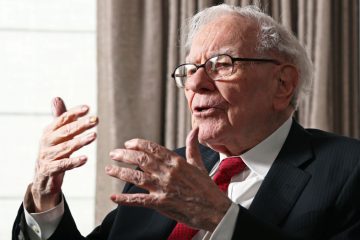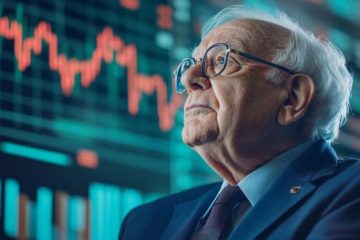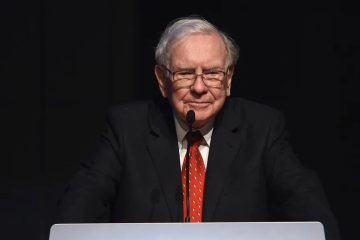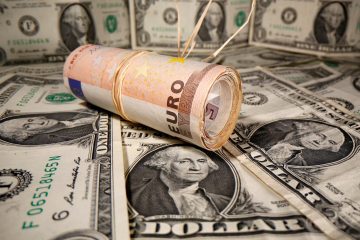Steve Jobs’ Investment That’s Returned 220x – And It’s Not Apple
In 1985, Steve Jobs was ousted from the company he had co-founded nine years earlier. After leaving Apple (AAPL), Jobs pursued other ventures – using the proceeds from his investment in Apple to do so (he sold all of his stock in the company besides a single share). In addition to starting NeXT Computer in September of that year, Jobs made another notable investment at that time. That investment, and how it has played out over the ensuing 29 years, is the focus of this article.
In February 1986, Jobs invested $ 10 million in Pixar, a spinout from Lucasfilm – $ 5 million for exclusive rights to technology developed by the computer graphics division at Lucasfilm, and another $ 5 million to capitalize the company. At that time, the employees and managers held a 30% stake in the company, with Steve Jobs owning the other 70% (link).
Pixar’s breakthrough moment in animation was the short film Tin Toy, which won an Academy Award in 1988. The first film to hit the big screen from Pixar was Toy Story, part of a deal in which Disney agreed to co-finance and distribute the film. It was a home run: Toy Story took in $ 39 million on its opening five days (Thanksgiving weekend 1995), and ultimately brought in $ 191 million domestically and $ 362 million worldwide (per Box Office Mojo – link). It was the highest-grossing movie in the U.S. in 1995, beating Pocahontas(which came in fourth) by more than $ 50 million.
Pixar Animation Studios went public on November 29, 1995; initially valued by underwriters at $ 12 – $ 14 per share, the stock went public at $ 22 per share and reached a high of $ 46 per share on the first day of trading (before settling at $ 39). According to the Wall Street Journal (link), Jobs held a roughly 80% stake in the company at the time – valuing his holdings at $ 1.1 billion.
At the time, it was estimated that he had invested a total of $ 60 million in Pixar between his initial purchase from Lucasfilm / capital contribution and incremental investments along the way. Steve Jobs had increased his investment in Pixar nearly 20x in less than a decade – good for a compounded annual growth rate of roughly 35% on the $ 60 million.
Fast forward 10 years: after proving their genius a few more times (A Bug’s Life, Monsters Inc., Finding Nemo, and others), Pixar’s run as a standalone company came to an end: in January 2006, The Walt Disney Company (DIS) announced that they had reached a deal to purchase Pixar for $ 7.4 billion.
The transaction was an all-stock deal – making Steve Jobs Disney’s largest shareholder (he owned 50.6% of Pixar at that time; he owned more than 70% of the company when Pixar’s first proxy statement was filed in 1997 but had been diluted by share issuance / option grants over the years). Disney’s proxy statement filed in early 2007 shows that Jobs owned 138,000,007 shares of Disney – enough for a nearly 7% stake in the company. The 10-K for 2006 shows that Disney stock ended the year at ~$ 30 per share – making Steve’s stake worth more than $ 4 billion.
After exchanging his ownership in Pixar for a stake in Disney, Steve Jobs made yet another intelligent investment decision: he did absolutely nothing. Those shares have been largely untouched over the ensuing nine years (roughly 94% of the position remains). Disney’s most recent proxy statement, filed January 2015, shows that the Laurene Powell Jobs Trust owns 130,181,925 share of Disney common stock – enough for a 7.7% stake in the company (the number of shares of Disney common stock outstanding have declined by ~15% since the end of 2006). As of Friday’s close of $ 102 per share, the stake is worth nearly $ 13.3 billion.
Over the course of 29 years, not accounting for the value derived from any Pixar / Disney shares sold or dividends received over that period, an initial investment of ~$ 60 million is now worth $ 13.3 billion; that works out to a 29-year compounded annual growth rate of more than 20% on Steve Job’s original investment in Pixar. To give you an idea of the power of compounding money at 20% a year, consider the following: doing so again over the next twenty-nine years would turn the current $ 13.3 billion into $ 2.6 trillion or so – more than the annual GDP of all but six countries.
Even starting from when Pixar went public (1995), Steve Jobs’ $ 1.1 billion stake in the company is now worth $ 13.3 billion two decades later – a return of ~13.5% per annum. Add in the ~8 million shares of Disney sold since then, as well as the $ 5.12 per share in cumulative dividends paid by Disney since 2006, and we’re likely talking about another $ 1 billion (at least) in proceeds – enough to bump the return up to ~14% a year.
Over that same time period, the S&P 500 has increased from roughly 600 to 2,055 as of Friday’s close – good for a 20-year compounded annual growth rate of 6.4%; including dividends, the total return from the S&P 500 is 8-9% per annum. On a $ 100,000 investment, compounding money for 20 years at 13.5% per annum will leave you with $ 1.26 million when all is said and done – more than twice as much money as what you would have at the end if you compounded your investment at 8.5% a year ($ 100,000 would be worth ~$ 511,000).
The position in Disney, worth $ 13.3 billion, has increased by 220x from the $ 60 million invested in Pixar in the years leading up to its IPO. Steve Jobs investment in Pixar – and his wife’s ongoing investment in Disney – has paid off in spades over the past three decades.
About the author:
I’m a value investor, with a focus on patience; I look to buy great companies that are suffering from short term issues, and hope to load up when these opportunities present themselves. As this would suggest, I run a fairly concentrated portfolio by most standards, usually with 8-10 names; from the perspective of a businessman rather than a market participant / stock trader, I believe this is more than sufficient diversification.
I hope to own a collection of great businesses; to ever sell one, I would demand a substantial premium to the average market valuation due to what I believe are the understated benefits to the long term investor of superior fundamentals and time on intrinsic value. I don’t have a target when I purchase a stock; my goal is to replicate the underlying returns of the business in question – which if I’ve done my job properly, should be very attractive over many years.








